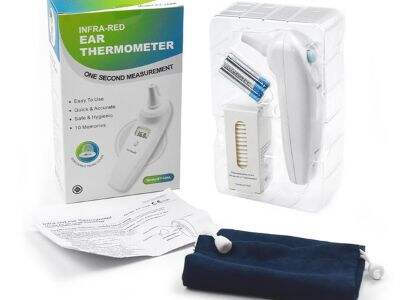The readings of a digital clinical thermometer can be an important piece of information about our health. It can be a little intimidating at first to work your way through this, but I assure you it will all make perfect sense after a bit of explanation.
How to read digital thermometers?
If you measure your temperature using a digital clinical thermometer, you will see numbers showing on the screen. This is the temperature of your body. It is crucial to understand the meaning of these readings.
Interpreting readings on the Celsius and Fahrenheit scale of the thermometer
The digital clinical thermometer can display readings in degrees Celsius or Fahrenheit. Temperature is expressed in Fahrenheit in some countries such as the U.S. and in Celsius in many other countries, including China. You need to learn how to convert between these two units on your Digital Clinical Thermometers so that you know what’s what when you take temperature readings.
What is a typical body temperature range?
The average body temperature in humans is between 98.6 F (37 C) and 99 F (37.2-37.7 C). But what's "normal" depends on the individual. The absolute key is understanding your own starting point or your normal body temperature, so that you can notice if something isn’t right.
Tips for monitoring your health
Checking in on your body temperature from time to time can help keep you abreast of your health. If you detect any meaningful differences between readings taken over time, that could be an indication that something is amiss. Where this is the case always seek the advice of a doctor or healthcare professional.
For those at-home temperature readings, here are some common mistakes and how to do it right
Occasionally, digital clinical thermometers may produce false readings for one reason or another -- improper use and environmental conditions being the most common culprits. These should be avoided if you want to get the most accurate temperature readings, so make sure that you read and understand the manufacturer’s instructions before use, otherwise you may experience problems such as not putting the digital thermometer in the right place or taking a reading in a hot or cold area.
How to use a digital clinical thermometer in different ways?
Many Digital Clinical Thermometers are designed with several modes like oral, rectal, or armpit modes to ensure temperature are tested precise throughout body. You have to make sure you are using the right mode for correct readings. If you are not sure how to operate in these modes, refer to your user manual or ask a healthcare professional.
Table of Contents
- How to read digital thermometers?
- Interpreting readings on the Celsius and Fahrenheit scale of the thermometer
- What is a typical body temperature range?
- Tips for monitoring your health
- For those at-home temperature readings, here are some common mistakes and how to do it right
- How to use a digital clinical thermometer in different ways?








